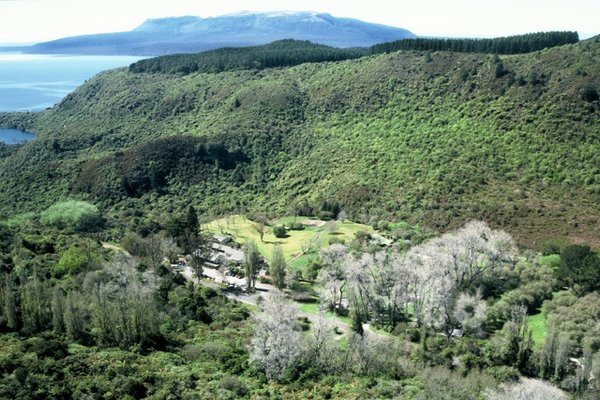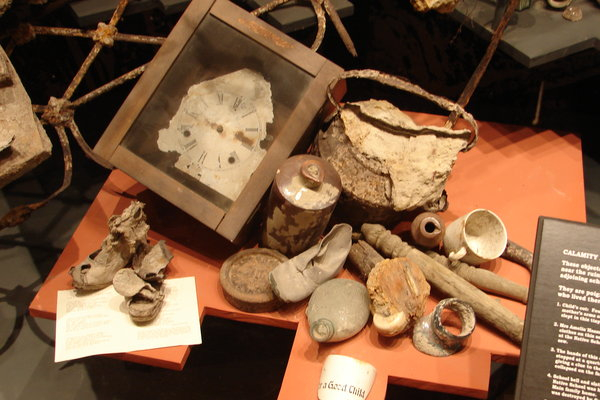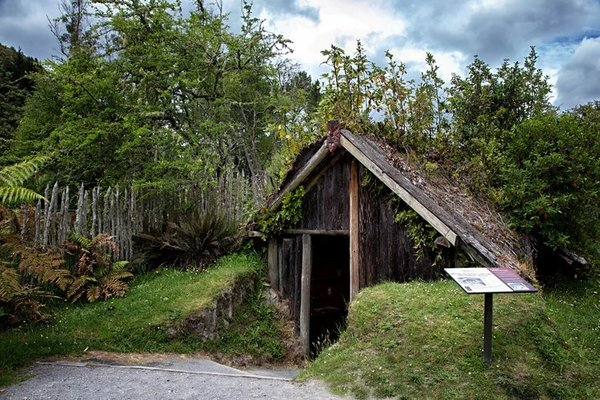The Smith family story unearths significance of devastating tale of eruption
Where did it all begin?
An English couple, Reginald and Violet Smith sailed to New Zealand on the SS Athenic in 1912, moving their lives to the other side of the world and settling in Rotorua where their two sons, Dudley and Basil, were born.
In 1931 and in the midst of the depression, Reg and Vi made a bold move; they purchased Te Wairoa. Abandoned by its previous owner Cecil Way, Te Wairoa was 12 acres of derelict land, overgrown with gorse and blackberry bush.
They knew it would be hard work but Reg and Vi were on a mission to bring this historical site back to life.
The Smiths began excavating some of the 60 sites that were buried by the debris of the Mt Tarawera eruption in 1886. They kept the original floor levels to show the magnitude of ash and mud that fell onto the village that fateful night.
As they unearthed Te Wairoa, they became aware of the significance of their discoveries. Their findings, all dug out with care and respect, began to piece together the devastating story behind the eruption.
A family pulls together
The Smiths had their work cut out for them. Their new investment had 20 years' worth of overgrown bush - most of which was thorn and thistle. Nevertheless, the family began clearing the wild foliage, building tracks and excavating some of the most significant buildings and relics in New Zealand history.
It was a time of financial uncertainty for many, so Reg kept his job as an accountant in Rotorua and biked to and from Te Wairoa each day. During these years, sons Basil and Dudley found work planting pine trees. In their weekends, they would help their father excavate the land.
Restoring the Te Wairoa Tea Rooms became Vi’s project. The newly renovated Tea Rooms attracted travellers from far and wide, many of whom were visiting the Waimangu geyser on the nearby walking track.
As the Devonshire teas cream and home-made blackberry jam were freshly prepared, the Tea Rooms became a popular stop on the sightseeing circuit.
The Tea Rooms can be largely credited for bringing visitors back to Te Wairoa. As the word got out about Vi’s delicious Devonshire tea, more people came to the Buried Village and this encourage many visitors who were willing to pay to see what remained of the old settlement.
Each member of the Smith family worked around the clock to uncover the Buried Village.
Their respect for the land and its history are the reason the excavated buildings and items are presented and preserved the way they are today.
Three generations and still going strong
When the war came, Dudley and Basil were conscripted. The boys sailed off into the unknown and Reg and Vi continued with the excavations.
Sadly, only Dudley came home from the war. Basil died in a bomber aircraft crash in Ceylon.
When Dudley returned in 1944, he brought infantryman's digging skills to Te Wairoa. He and is girlfreind from Auckland Nora Lanigan, married that same year. The couple had two children, Philip and Pamela.
Dudley and Nora took over the property when Reg and Vi moved to Mount Maunganui to retire in the late 1950s. After a short retirement, Reg passed away in 1962 and Vi followed him one year later.
In 1977, Dudley and Nora re-built facilities at the Buried Village based on the design of the old Terraces Hotel that was once part of Te Wairoa. By this stage, the Buried Village incorporated the Tarawera Lakes District’s Post Office and the General Store.
In 1994, Dudley passed away at the age of 79. He left the property to his daughter, Pam, and her husband Patrick McGrath. Pam and Pat are the current owners and have been so for over 30 years.
The history uncovered by the Smiths
Would Te Wairoa have been uncovered by now had it not been for Reg and Vi? The excavation undertaken by the Smiths paved the way for further discoveries and has given so many people the opportunity to experience and enjoy the Buried Village.
Throughout their incredible journey, the Smiths managed to maintain the integrity of this archeological site. When walking the Buried Village, you really do take a step back in time.
As a world-wide attraction, visitors to New Zealand consider the Buried Village a must-see on their journey.
After all, more than 80 years has passed since the Smiths purchased the property but the focus has remained the same; to preserve and enhance a monumental event in New Zealand’s history.











Connect with Us
Facebook YouTube Instagram Tripadvisor Blog Email